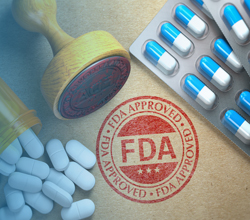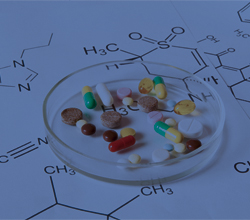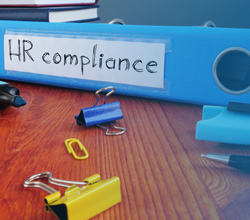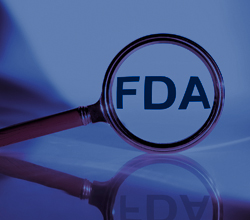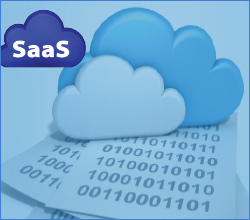
Understanding and Implementing a Technology Transfer Process
 Steven Laurenz
Steven Laurenz
 60 Min
60 Min
Product Id: 705031
This webinar will discuss the steps to guide the technology transfer for the successful implementation, ensures that products of the highest quality are delivered to the patients along with meeting the business demands of the company.

Objectionable Microorganisms in Biopharmaceutical Manufacturing
 Carl Patterson
Carl Patterson
 60 Min
60 Min
Product Id: 705319
This webinar will discuss the regulations pertaining to objectionable microorganisms, agency expectations, methods to identify objectionable microorganisms, interpreting results, and controls to put into place.

Performing an Effective, Robust and Compliant Sterility Failure Investigation: How to Avoid Common Mistakes
 Charity Ogunsanya
Charity Ogunsanya
 90 Min
90 Min
Product Id: 703885
This training program will highlight mistakes often made when corrective and preventative actions are not clearly identified and applied during a manufactured product sterility test failure investigation because an ineffective investigational procedure and tool was used to conduct a sterility test failure investigation. The webinar will also illustrate how avoiding such common mistakes will ensure that these types of products meet the sterility requirements USP <71> and other regulatory guidelines applicable to finished products, bulk drug substance, raw materials or excipients.

Analytical Method Validation Under Good Laboratory Practices (GLPs)
 John Fetzer
John Fetzer
 60 Min
60 Min
Product Id: 703561
This laboratory compliance training will teach you how to validate an analytical method under the GLP requirements. It will cover in detail the criteria for the validation of an analytical method including statistical and documentation requirements.

Understanding and Implementing a Quality by Design (QbD) Program
 Steven Laurenz
Steven Laurenz
 60 Min
60 Min
Product Id: 705001
This webinar will help you understand Quality by Design (QbD) principles used in pharmaceutical product manufacturing, outline the key steps to implement a QbD program and discuss the tools used to implement a QbD approach.

4-Hr Virtual Training: How to Respond to an FDA Investigation
 Joy McElroy
Joy McElroy
 4 hrs
4 hrs
Product Id: 704549
This FDA investigation training program will deconstruct best practices for handling unannounced FDA visits, responding to a 483 or a warning letter, and the effect of an FDA investigation. The program will also discuss basic concepts that should be employed by everyone regulated by the FDA and define processes for preparing for FDA audits.

Automating Assays for Clinical Diagnostics
 Todd Graham
Todd Graham
 60 Min
60 Min
Product Id: 703268
This webinar on automating laboratory assays will teach you how to translate an assay that is performed manually to one that is fully automated, with high quality and with proper validation and quality assurance for regulatory purposes.

OTC Drug Regulations
 Loren Gelber
Loren Gelber
 60 Min
60 Min
Product Id: 705446
This webinar will provide attendees with the knowledge and skills needed to develop and produce an OTC drug product for marketing and sale in the U.S.

Quality Risk Management Overview for Pharma, Biopharma and Combination Products - ICH Q9/ISO 14971
 Tanvir Mahmud
Tanvir Mahmud
 90 Min
90 Min
Product Id: 702422
This 90-minute webinar will cover principles and provide examples of tools for quality risk management that can be applied to different aspects of pharmaceutical quality. It will provide you with the knowledge and understanding needed to improve patient safety and also to prepare your organization for regulatory inspections.

CDISC Mapping 5: ADAM Models - ADSL, BDS and ADAE
 Sunil Gupta
Sunil Gupta
 90 Min
90 Min
Product Id: 704316
This training session is intended for anyone directly or indirectly responsible for the creation, content or validation of CDISC data sets, tables, and data lists used to support research, drug or medical device efficacy and safety in a regulatory submission. The program will provide effective and practical solutions to address real-world issues.

CDISC Mapping 4: SDTMs and ADAMs Examples (80%/20% Mapping Rule)
 Sunil Gupta
Sunil Gupta
 90 Min
90 Min
Product Id: 704313
This training program is intended for anyone directly or indirectly responsible for the creation, content or validation of CDISC data sets, tables, and data lists used to support research, drug or medical device efficacy and safety in a regulatory submission. Through case study analysis, the course will examine best practices to provide thoughts and ideas to develop or improve the CDISC mapping system.

Understanding Aseptic Technique and Cleanroom Behavior
 Danielle DeLucy
Danielle DeLucy
 60 Min
60 Min
Product Id: 704429
This training program will discuss how, in sterile compounding, aseptic technique is contributing to the prevention of microbiological contamination. It provides sterility, safety, and efficacy to the sterile product, especially various injections for patients. In this course, cleaning, gowning and proper methods of contamination control will be reviewed along with why clean rooms are designed the way they are.

Combination Drug/Device Products CGMPs - Final Rule
 John E Lincoln
John E Lincoln
 90 Min
90 Min
Product Id: 702810
This training on combination product regulations will evaluate the chief areas of concern or change in the new CGMP requirements for combination products, 21 CFR Part 4, and clarify many of the issues and questions that arise involving combination products.

Scale-Up, Cycle Transfer, and Maximum Throughput Capability for Lyophilized Products
 J. Jeff Schwegman
J. Jeff Schwegman
 90 Min
90 Min
Product Id: 702893
This training on lyophilization cycles will cover the process of transferring and or scaling-up a lyophilization process to a larger or different freeze-dryer. It will discuss a methodical approach to understand the thermal properties of a product and simplify the scale-up or transfer process resulting in a consistent product being produced in any freeze-dryer.

Vendor Qualification - How to Design and Implement an Efficient and Compliant Vendor Program
 Todd Graham
Todd Graham
 60 Min
60 Min
Product Id: 703066
This webinar will tell you what you need to know to design a compliant vendor program, implement it throughout the organization, manage the necessary documentation and effectively communicate with vendors your requirements, needs and issues.

CDISC Mapping 3: Compare and Contrast SDTM and ADaM Steps
 Sunil Gupta
Sunil Gupta
 90 Min
90 Min
Product Id: 704302
This training program will assist anyone directly or indirectly responsible for the creation, content or validation of CDISC data sets, tables, and data lists used to support research, drug or medical device efficacy and safety in a regulatory submission. Professionals in the pharmaceutical, biotechnology and medical device industries who want to be Good Clinical Practices (GCP) compliant in relation to regulatory submission environment will benefit from this training. Effective and practical solutions to address real-world issues will be detailed.

U.S. Adverse Event Reporting Regulations for Drugs, Dietary Supplements and Cosmetics
 Norma Skolnik
Norma Skolnik
 60 Min
60 Min
Product Id: 704371
In order to market dietary supplements and OTC drugs in the U.S., reporting serious adverse events is required. It’s essential to understand these important FDA requirements to assure regulatory compliance and avoid an FDA warning letter or 483 audit issues.

New and Expected Guidance’s on Data Standards and Electronic Submissions for Drugs and Medical Products
 Angela Bazigos
Angela Bazigos
 90 Min
90 Min
Product Id: 704529
This training program will examine the approval process for drugs, biologics and devices and elaborate FDA submission requirements and guidances. It will also discuss electronic regulatory submission and gateway for FDA and FDA eCTD guidance and specifications.

QbD Approach to Analytical Method Lifecycle: Design, Development, Validation and Transfer
 Gregory Martin
Gregory Martin
 90 Min
90 Min
Product Id: 703644
This training on using the QbD approach to analytical method lifecycle is designed to provide participants with a lifecycle approach to developing and validating analytical methods and comply with compendial requirements. The webinar presenter will use case studies to illustrate each stage in the process.

CDISC Mapping 2: ODM, MindMaps and References
 Sunil Gupta
Sunil Gupta
 90 Min
90 Min
Product Id: 704208
This training program will highlight key differences between SDTM and ADaM models and process flows. It will also focus on key differences between the seven CDISC classes and on best practices to create Dataset.XML from SAS. Attendees will gain a better understanding of the structure and syntax of ODM-XML files as well.

